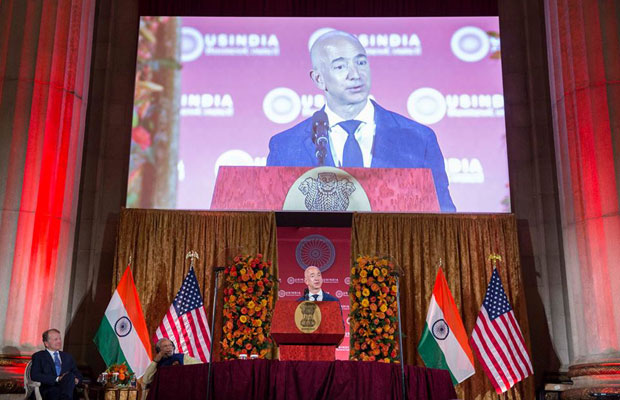Amazon CEO Jeff Bezos recently announced an expansion of the company’s investment in India to the tune of US$3 billion — that was in addition to the $2 billion in investments it announced in 2014.
Bezos announced the new investment during the 41st annual U.S.-India Business Council Leadership Summit, which was attended by Indian Prime Minister Narendra Modi and several top business leaders.
“We have already created some 45,000 jobs and continue to see huge potential in the Indian economy,” Bezos said at the summit.
The “Amazon.in team is surpassing even our most ambitious planned milestones,” he added.
Amazon runs 21 fulfillment centers in India and has 85,000 sellers on its e-commerce platform, according to the U.S. Chamber of Commerce.
The company’s plans include opening a new region for the Amazon Web Services cloud computing business and building its largest software engineering and development center outside the U.S., the Chamber reported.
“When I peer into the future of India, what I see is unlimited India,” Bezos said.
Foreign Investment Regs
Bezos’ announcement followed a recent change in India’s restrictions on foreign direct investment, which requires companies like Amazon to act as intermediaries in the local marketplace. Amazon sells much of its inventory through Cloudtail, a joint venture with Catamaran Ventures, the private investment arm of billionaire N.R. Narayana Murthy, who cofounded Infosys.
Amazon earlier this year announced a new10-acre campus in Gachibowli, an IT-focused suburb of Hyderabad, Telangana. The campus will be the largest in India and the company’s biggest outside the U.S.
Amazon last year announced the launch of one of its largest fulfillment centers in Hyderabad. The new campus, which will be ready in 2019, will manage back-end operations for various business and technology teams around the world.
Telangana has been home to Amazon’s IT operations since 2005.
All In
“It appears that Amazon is seeking to build an infrastructure just for the India market, which is good strategy given the regulatory challenges of being a foreign entity and the different e-commerce environment,” said Jim McGregor, principal analyst at Tirias Research.
The investment is part competitive, part political, he said, as it no doubt will curry favor with government officials in India.
“With deep pockets, Amazon can outposition smaller local competitors, while buying goodwill with the powers that be,” McGregor observed.
One of the world’s fastest-growing e-commerce markets, India currently is dominated by firms like Flipkart, Snapdeal and Alibaba.
“India represents a rapidly expanding market with a growing middle class,” Stratecast/Frost & Sullivan Program Manager Mike Jude told the E-Commerce Times.
Overall, the online retail market in India is only 2 percent of total retail sales in that country, according to Forrester Research. However, growth in e-tailing is exploding, with the market expected to rise at a compound annual growth rate of 44 percent, starting last year, to reach $75 billion by 2020.























































Social Media
See all Social Media